- europages
- >
- COMPANIES - SUPPLIERS - SERVICE PROVIDERS
- >
- organic compounds
Results for
Organic compounds - Import export
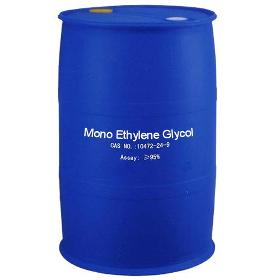
TEMAS GROUP EXPORT PARTNERS
Turkey
MONOETHYLENE GLYCOL (MEG) MEG Purity 99.8 % wt. min Color [Pt-co ] 5 max DEG 0.08 % wt. max Water 0.08 % wt. max Specific gravity (20/20 ◦C) 1.1151-1.1156 Boiling range at 0.1013 MPA 5% Vol. Min 196 ◦C 95% Vol. Max 199 ◦C Pyhsical Spec: Transparent Liquid, colorless Introduction Monoethylene glycol (MEG) is an odorless, colorless, clear and viscose liquid with a sweet taste, which is produced from the reaction between water and ethylene oxide. It is miscible with water, alcohols, and many organic compounds, and has the chemical formula of C2H6O2. General Applications MEG has numerous applications for manufacture of various products including automotive antifreeze and coolants, resins, deicing fluids, heat transfer fluids, leather, paper, textile fibers, water-based adhesives, sturdy polyethylene terephthalate drink and food containers, latex paints and asphalt emulsions and electrolytic capacitors.
Request for a quote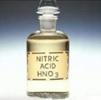
JADAM
Portugal
Nitric acid (HNO₃) is a colorless liquid with yellow or red fumes due to decomposition into oxides of nitrogen It is a highly corrosive mineral acid with an acrid odor most commercially available nitric acid has a concentration of 68% in water, when the solution contains more than 86% HNO3, it is referred to as fuming nitric acid Industries: Household chemicals, Fertilizers, Adhesives, oils, greases, Horticulture Precursor to organic nitrogen compounds Use as an oxidant in nylon industry Metal processing,Woodworking ,Etchant and cleaning agent Properties: CAS number 7697-37-2 WE number 231-714-2 Chemical formula HNO3 Molar mass 63,01 g/mol Customs tariff code 28080000 ADR UN2031 pH <1 Melting / freezing point -18°C (1013 hPa) Boiling point / range 117°C (1013 hPa) Relative density 1,31 g/cm3 @20°C Solubility in water 500 g/l @20°C
Request for a quote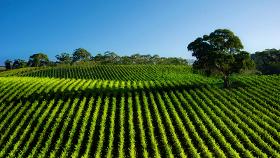
FKL FERTILIZERS
Belgium
This is a series of organic compound fertilizers used as base fertilizer for a range of different crops. In addition to providing primary nutrients such as nitrogen, phosphorus and potassium, they contain a high percentage of organic material and some very important trace elements such as Fe, Mn, B, Mo, Zn and Cu.
Request for a quote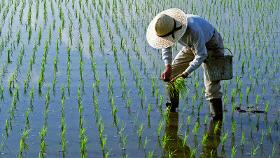
FKL FERTILIZERS
Belgium
This is a series of organic compound fertilizers used as base fertilizer for a range of different crops. In addition to providing primary nutrients such as nitrogen, phosphorus and potassium, they contain a high percentage of organic material and some very important trace elements such as Fe, Mn, B, Mo, Zn and Cu.
Request for a quote
JADAM
Portugal
Ethanol 99% (also called ethyl alcohol, grain alcohol, drinking alcohol, or simply alcohol) is an organic compound with the chemical formula CH3CH2OH It is an alcohol, its formula also written as C2H5OH or EtOH Ethanol is a volatile, flammable, colorless liquid with a characteristic wine-like odor and pungent taste It is the active ingredient in alcoholic drinks Uses: Medical (anesthetic, antiseptic, antidote and solvent) Fuel (engine fuel, rocket fuel, fuel cells) Low-temperature solvent in laboratories Properties: CAS Number 64-17-5 UN number 1170 Chemical formula C2H6O Molar mass 46.069 g/mol Appearance Colorless clear liquid Odor wine-like, pungent Density 0.78945 g/cm3 @20 °C Melting point −114.14 ± 0.03 °C Boiling point 78.23 ± 0.09[3] °C Solubility in water Miscible Flash point 14 °C Custom tariff number (HS Code) 22071000
Request for a quoteDo you sell or make similar products?
Sign up to europages and have your products listed
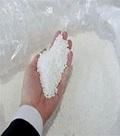
JADAM
Portugal
Urea is an organic compound with chemical formula CO(NH2)2 Urea serves an important role in the metabolism of nitrogen-containing compounds by animals and is the main nitrogen-containing substance in the urine of mammals Applications: Agriculture Urea is used as a nitrogen-release fertilizer it has the highest nitrogen content (46% N) of all solid nitrogenous fertilizers in common use Urea is a raw material for the manufacture of urea-formaldehyde resins, used mainly in wood-based panels such as particleboard Explosives Urea can be used to make urea nitrate, a high explosive that is used industrially and as part of some improvised explosive devices Automobile systems Urea is used to reduce the NOx pollutants in exhaust gases from combustion from diesel, dual fuel, and lean-burn natural gas engines properties: Molar mass 60.06 g/mol Density,1.32 g/cm3 Melting point 133-135 °C Solubility in water 545 g/L @25°C / pH 9,2 - 9,5 CAS number,57-13-6 WE number,200-315-5
Request for a quote
JADAM
Portugal
Hydrogen peroxide 30%,50% ,60% Hydrogen Peroxide (H₂O₂) is a colorless liquid with a slightly sharp odor it is used as a bleach for textiles and paper, as a component of rocket fuels, and for producing foam rubber and organic chemicals, it is also used in medicinal applications and to bleach clothes and hair. Industries: Household chemicals, Fertilizers, Cosmetic industry, Horticulture, Pharmaceutical industry, Food industry Uses: Bleaching,Production of organic peroxy compounds,Production of inorganic peroxides Sewage treatment,Disinfectant,Propellant Properties: CAS number 7722-84-1 WE number 231-765-0 Chemical formula H2O2 Molar mass 34,01 g/mol Customs tariff code 28470000 ADR UN2014 pH 1,5 – 4 Melting / freezing point - 33°C (35%), -51°C (50%), -56°C (60%) Boiling point 108°C (35%), 114°C (50%), 119°c (60%) Relative density 1,07 g/cm3 (35%), 1,195 (50%), 1,241 (60%)
Request for a quote
STOOPEN & MEEÛS
Belgium
candy, spices, herbs, ... FOODCOLOURS A dye is a substance that needs a certain affinity with the carrier on which it is being applied. Hence a bond is created and the colouring capacity emerges. Contrary to a pigment, a dye is a dissolvable colorant and the colouring capacity will only show when dissolved. Dyes always have an organic compound. For more than 5000 years, natural resources have been the base for dyes. Leafs, roots and berries are just some of the components. Nowadays, most of these components have been replaced by synthetic variants. Of course, special dyes are applied when considering nutrition. (E100-199) Some dyes can be transformed in pigments by applying iron salt in a solution. This will cause the formation of the pigment. However, pigments won in this way are often little UV-resistant. What are dyes? There exists a great number of dyes for a great number of applications. Dyes are usually categorised based on their properties. (e.g.
Request for a quote
STOOPEN & MEEÛS
Belgium
petroleumbased products, candles, ... SOLVENT DYES A dye is a substance that needs a certain affinity with the carrier on which it is being applied. Hence a bond is created and the colouring capacity emerges. Contrary to a pigment, a dye is a dissolvable colorant and the colouring capacity will only show when dissolved. Dyes always have an organic compound. For more than 5000 years, natural resources have been the base for dyes. Leafs, roots and berries are just some of the components. Nowadays, most of these components have been replaced by synthetic variants. Of course, special dyes are applied when considering nutrition. (E100-199) Some dyes can be transformed in pigments by applying iron salt in a solution. This will cause the formation of the pigment. However, pigments won in this way are often little UV-resistant. What are dyes? There exists a great number of dyes for a great number of applications. Dyes are usually categorised based on their properties. (e.g.
Request for a quote
STOOPEN & MEEÛS
Belgium
staining, polishing, varnishing,... NATURAL OXIDES: yellow, red, brown, black STAIN, COLOURED STAIN SYNTHETIC IRON OXIDES: yellow, red, brown, black CHROME OXIDE GREEN COBALT OXIDE: green, blue ULTRAMARINE: blue, violet CARBON- or PITCH-BLACK TITANIUMDIOXIDE WHITE LEAD CHROMATE : yellow, orange WATER-SOLUBLE DYES: acid and basic A dye is a substance that needs a certain affinity with the carrier on which it is being applied. Hence a bond is created and the colouring capacity emerges. Contrary to a pigment, a dye is a dissolvable colorant and the colouring capacity will only show when dissolved. Dyes always have an organic compound. For more than 5000 years, natural resources have been the base for dyes. Leafs, roots and berries are just some of the components. Nowadays, most of these components have been replaced by synthetic variants. Of course, special dyes are applied when considering nutrition.
Request for a quote
STOOPEN & MEEÛS
Belgium
wool, coton, leather, raffia, nylon, ... DIVERS DYES A dye is a substance that needs a certain affinity with the carrier on which it is being applied. Hence a bond is created and the colouring capacity emerges. Contrary to a pigment, a dye is a dissolvable colorant and the colouring capacity will only show when dissolved. Dyes always have an organic compound. For more than 5000 years, natural resources have been the base for dyes. Leafs, roots and berries are just some of the components. Nowadays, most of these components have been replaced by synthetic variants. Of course, special dyes are applied when considering nutrition. (E100-199) Some dyes can be transformed in pigments by applying iron salt in a solution. This will cause the formation of the pigment. However, pigments won in this way are often little UV-resistant. What are dyes? There exists a great number of dyes for a great number of applications. Dyes are usually categorised based on their properties. (e.g.
Request for a quote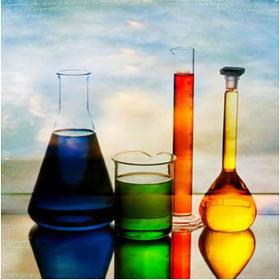
STOOPEN & MEEÛS
Belgium
detergents, ... WATER-SOLUBLE DYES A dye is a substance that needs a certain affinity with the carrier on which it is being applied. Hence a bond is created and the colouring capacity emerges. Contrary to a pigment, a dye is a dissolvable colorant and the colouring capacity will only show when dissolved. Dyes always have an organic compound. For more than 5000 years, natural resources have been the base for dyes. Leafs, roots and berries are just some of the components. Nowadays, most of these components have been replaced by synthetic variants. Of course, special dyes are applied when considering nutrition. (E100-199) Some dyes can be transformed in pigments by applying iron salt in a solution. This will cause the formation of the pigment. However, pigments won in this way are often little UV-resistant. What are dyes? There exists a great number of dyes for a great number of applications. Dyes are usually categorised based on their properties. (e.g.
Request for a quote
SCHÖNWOLF HAMBURG BY 7 SOLUTIONS GMBH
Germany
With the robust and reliable gas detector GasAlertMicro5 of BW-Technologies, it is possible to measure and to control up to five dangerous gases at the same time. Thanks to intelligent, integrated pump technology (optional) long distance samples in containers or enclosed rooms are possible, and is suitable for a broaden range of industrial applications. GasAlertMicro5 is available as standard version for toxic and flammable gases, as well as PID version for detection of volatile organic compound or as IR-version for detection of carbon monoxide. Features of GasAlertMicro5 Permanent display up to 5 gases concentrates in real-time at once Impact- and water-resistant Self-test of all functions for sensors, battery, electronic and acoustic / visual alarm Bright, wide-angle flashing alarm display With integrated vibration alarm, ideal for noisy environment Free adjustable alarm points Integrated gas sampling pump with reliable membrane technology Setting of various languages...
Request for a quote
AAVOS INTERNATIONAL
Belgium
Proven reliable FTIR technology yields real-time analysis of both organic and inorganic compounds. Measures ambient toxic and pollutant gases with ppb to % level detection. A variety of user configurable alarms for instant warnings of toxic gas levels and system control. Capable of monitoring 28 components with up to 32 sampling points over a distance of 300 meters from the analyzer. Rapid response time – typically 20-200 seconds per stream. Configurable sample point selection control locally or by DCS. SpectraRTS™ operating software engineered exclusively for environmental monitoring – appropriate for development chemists, engineers and maintenance personnel.
Request for a quoteResults for
Organic compounds - Import exportNumber of results
15 ProductsCountries
Company type